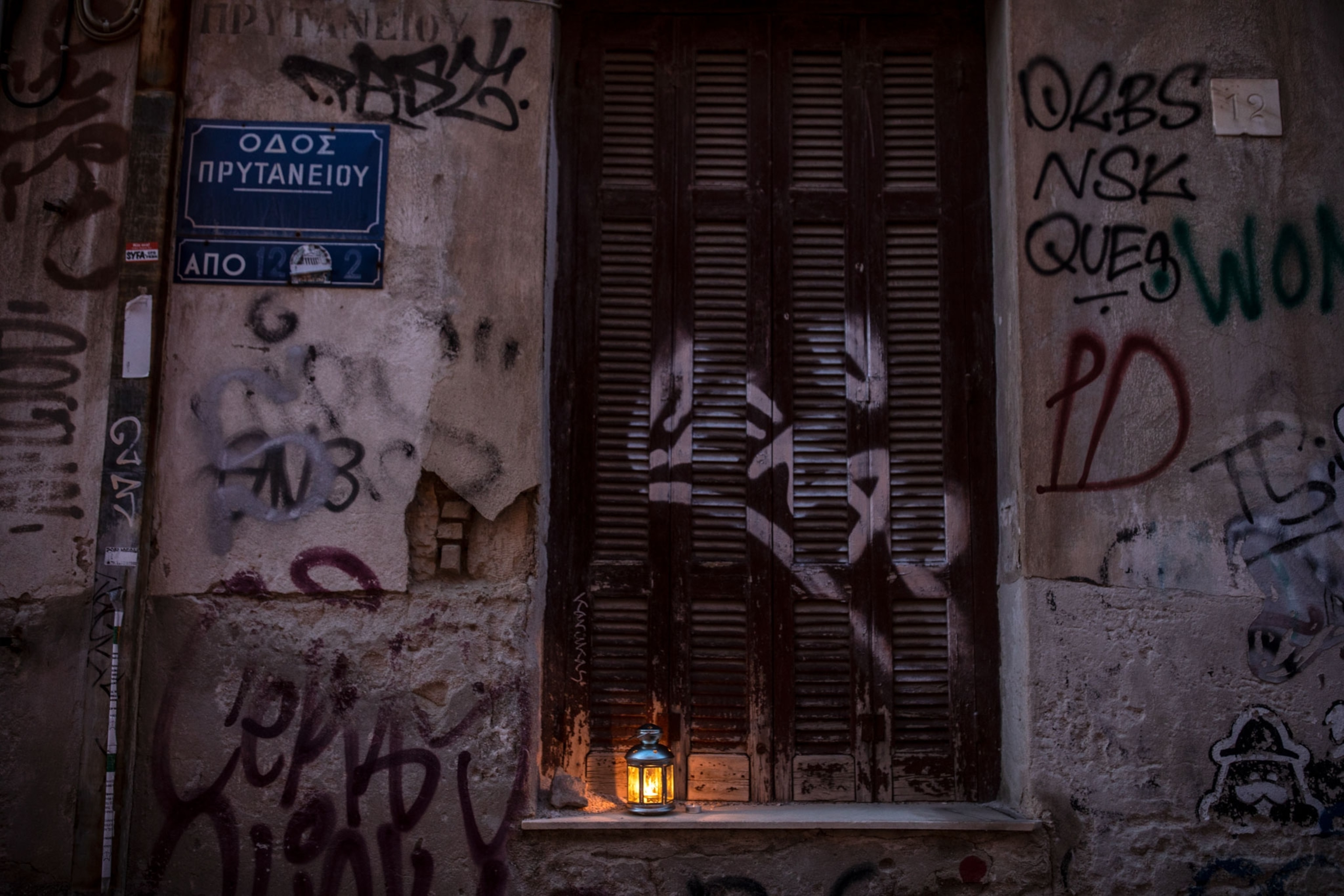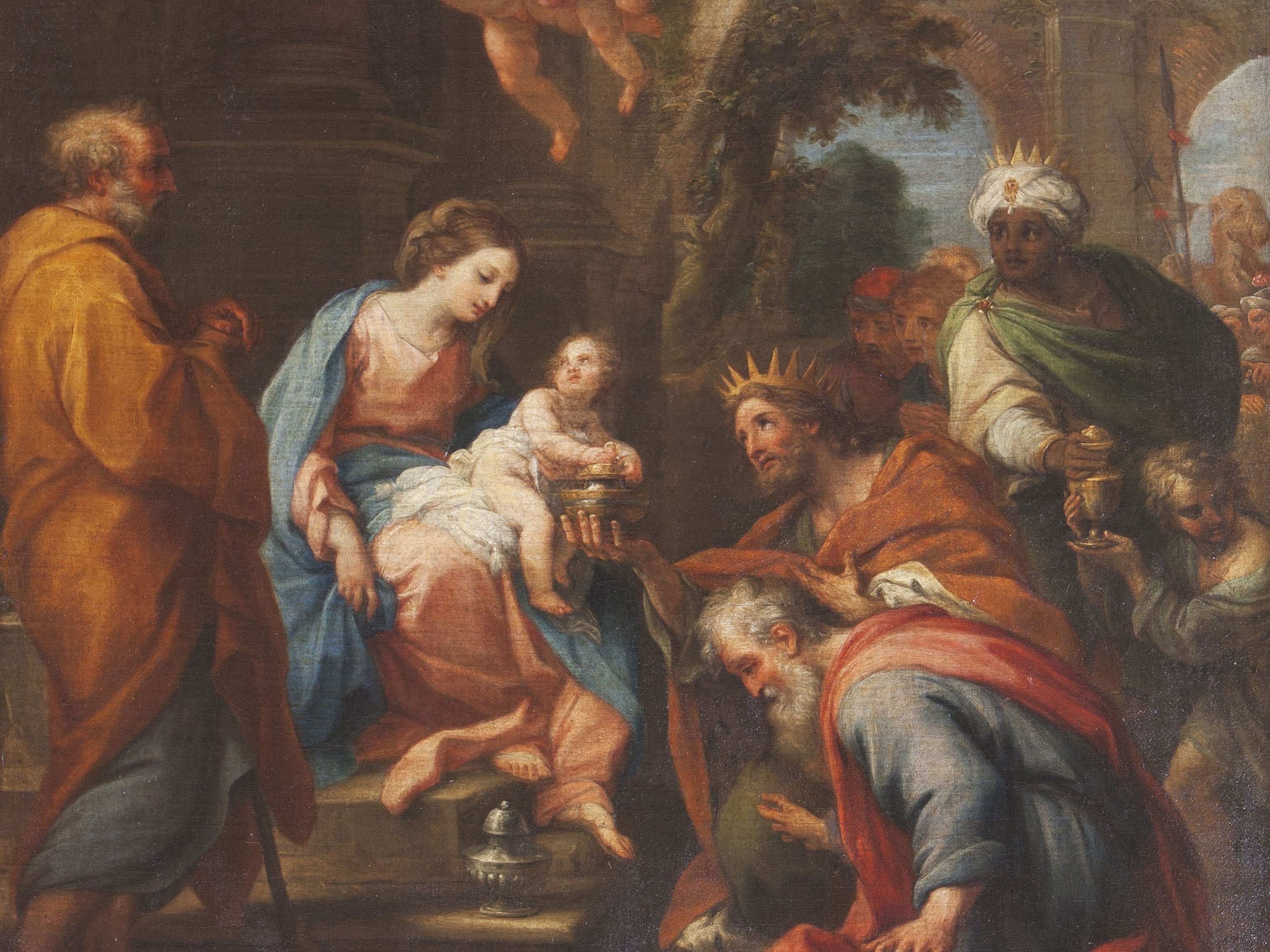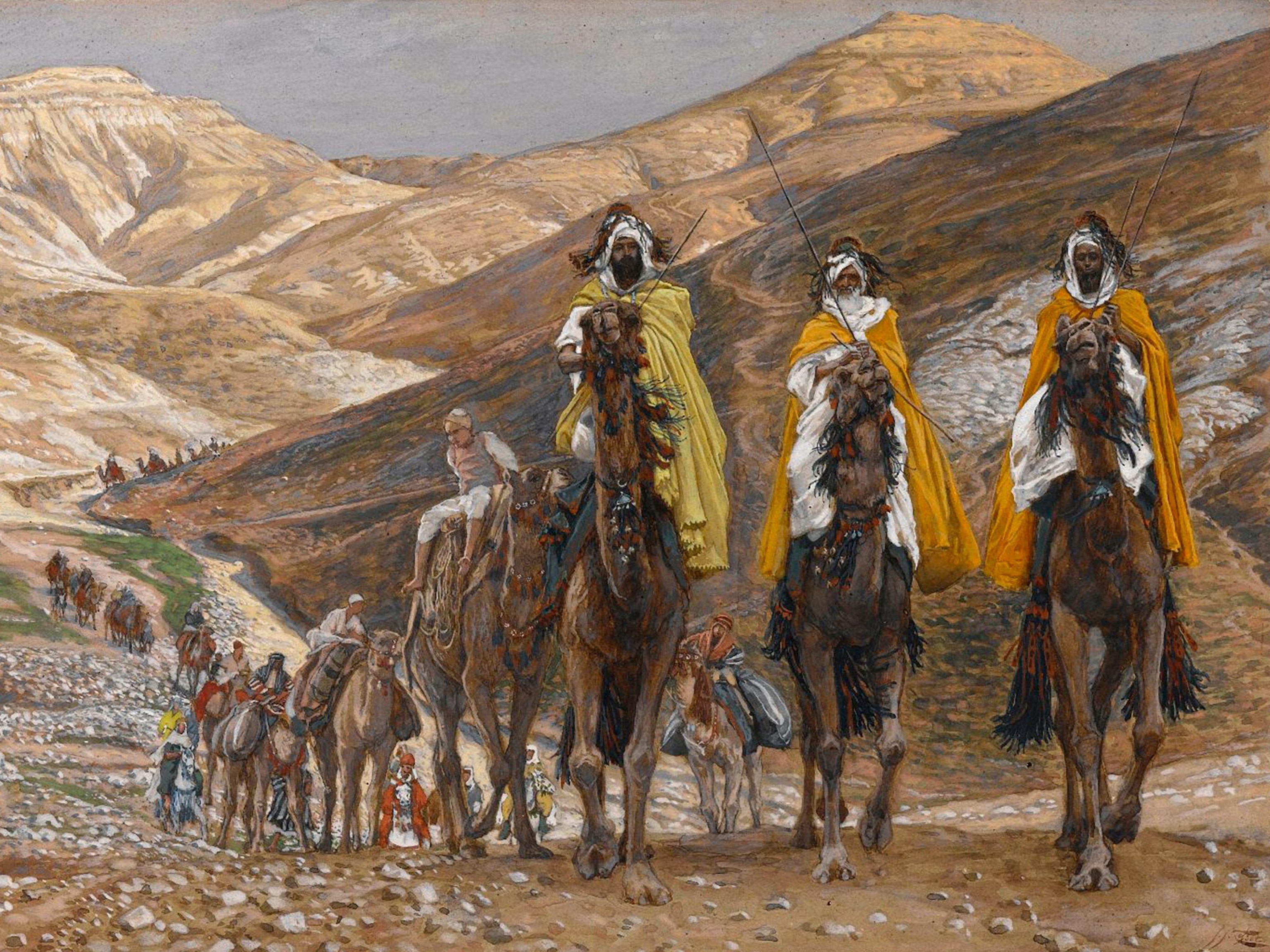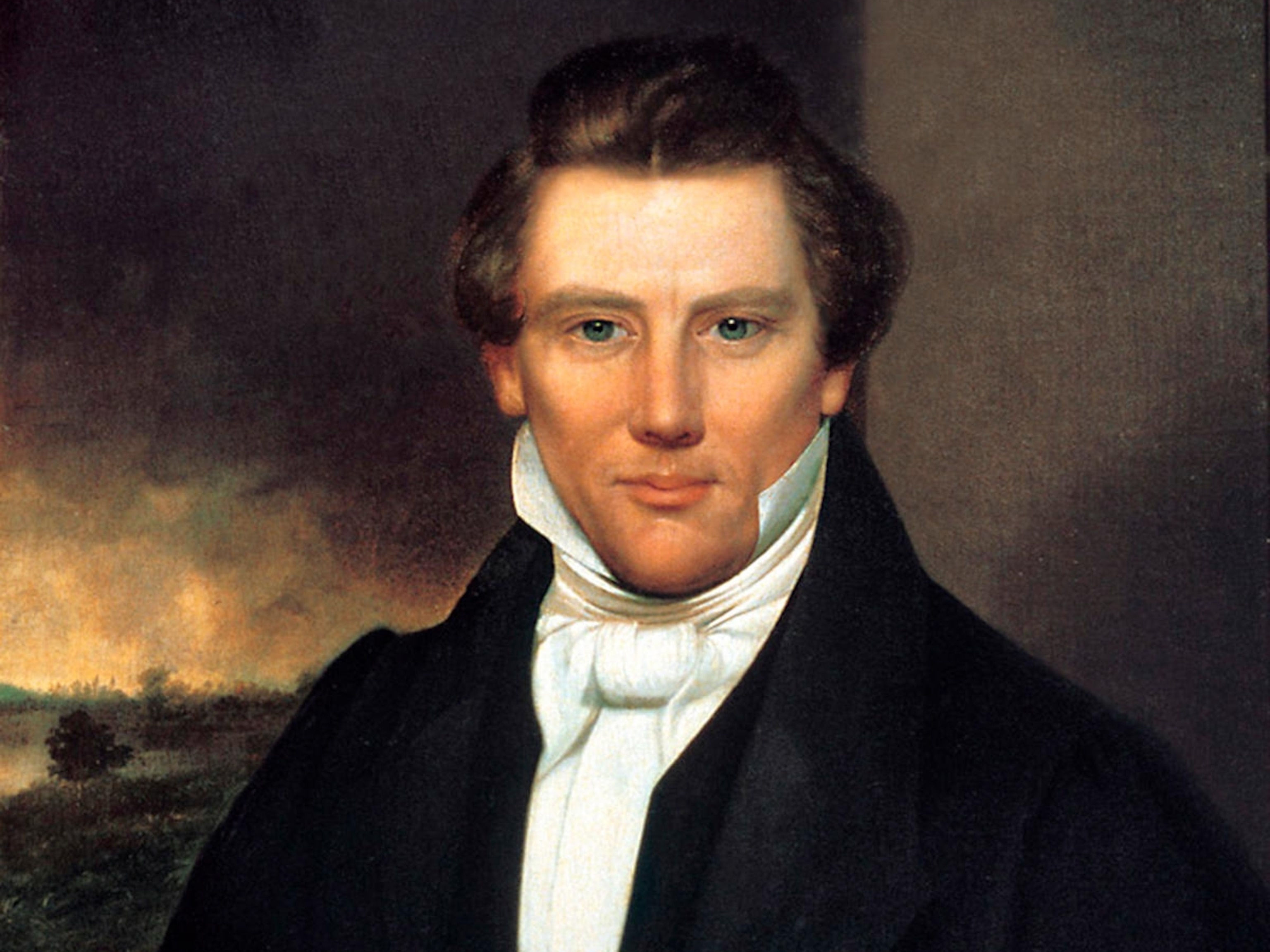
How a sacred flame spreads across the world despite the pandemic
For more than 1,000 years, Christians have celebrated the Holy Fire ceremony in Jerusalem. Here’s how it continues to bring light to the faithful in dark times of quarantine.
Three years ago this weekend, I had a ringside seat on one of the most ancient, exuberant, and terrifying events I’ve ever witnessed in a house of worship: the Ceremony of the Holy Fire.
According to church tradition, each year on the day before Orthodox Easter (April 18 this year), a flame miraculously appears inside the tomb of Jesus Christ in Jerusalem’s Church of the Holy Sepulchre. The flame is captured by the Greek patriarch of the city, who first enters the tomb with fistfuls of unlit candles and emerges with flaming standards held aloft. More than 10,000 expectant pilgrims packed around the tomb burst into triumphant cheers as the church bells peal and the Holy Fire is hastily passed from candle to candle.


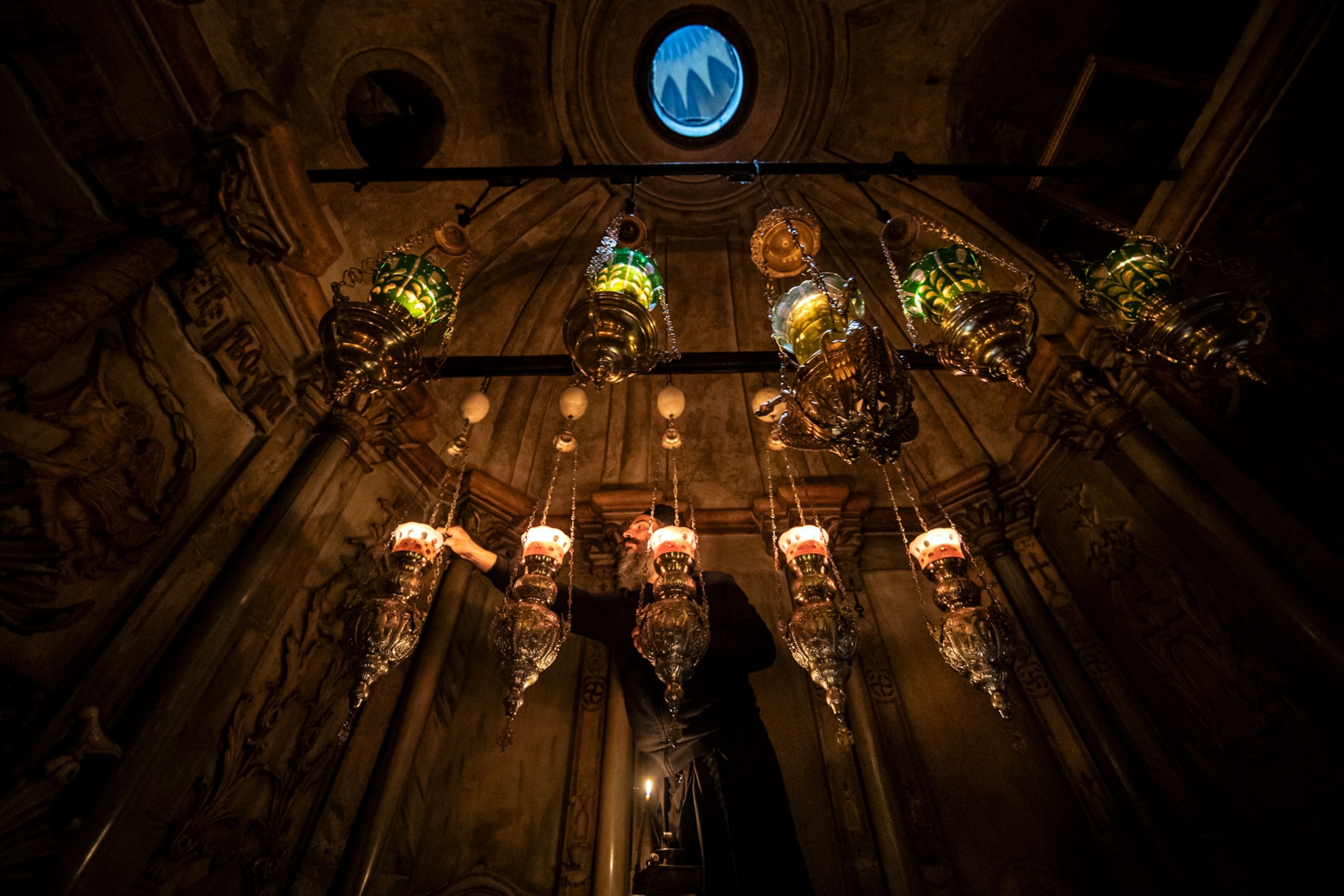
In mere seconds the dark, cavernous interior of the ancient church seems to explode into open flame as the shouts and singing reach their crescendo. Their candles lit, the faithful spill out beyond the towering wooden doors of the church and into the cobbled streets of Jerusalem’s Old City, where others wait to receive the sacred flame. To the hundreds of millions of Orthodox believers, the Holy Fire symbolizes the resurrection of Jesus, and the appearance of the flame inside his tomb is an annual miracle whose arrival is anticipated and celebrated.
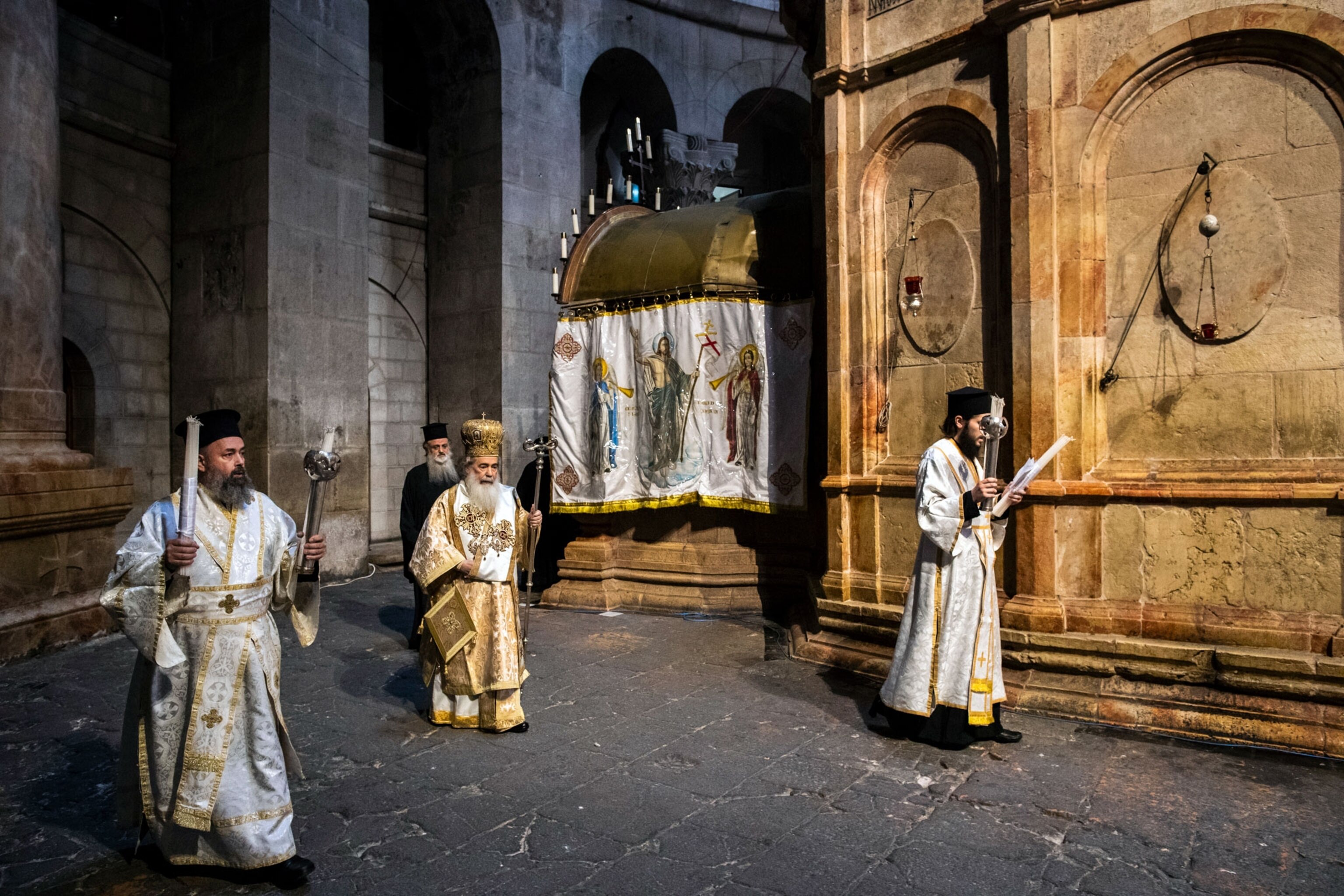
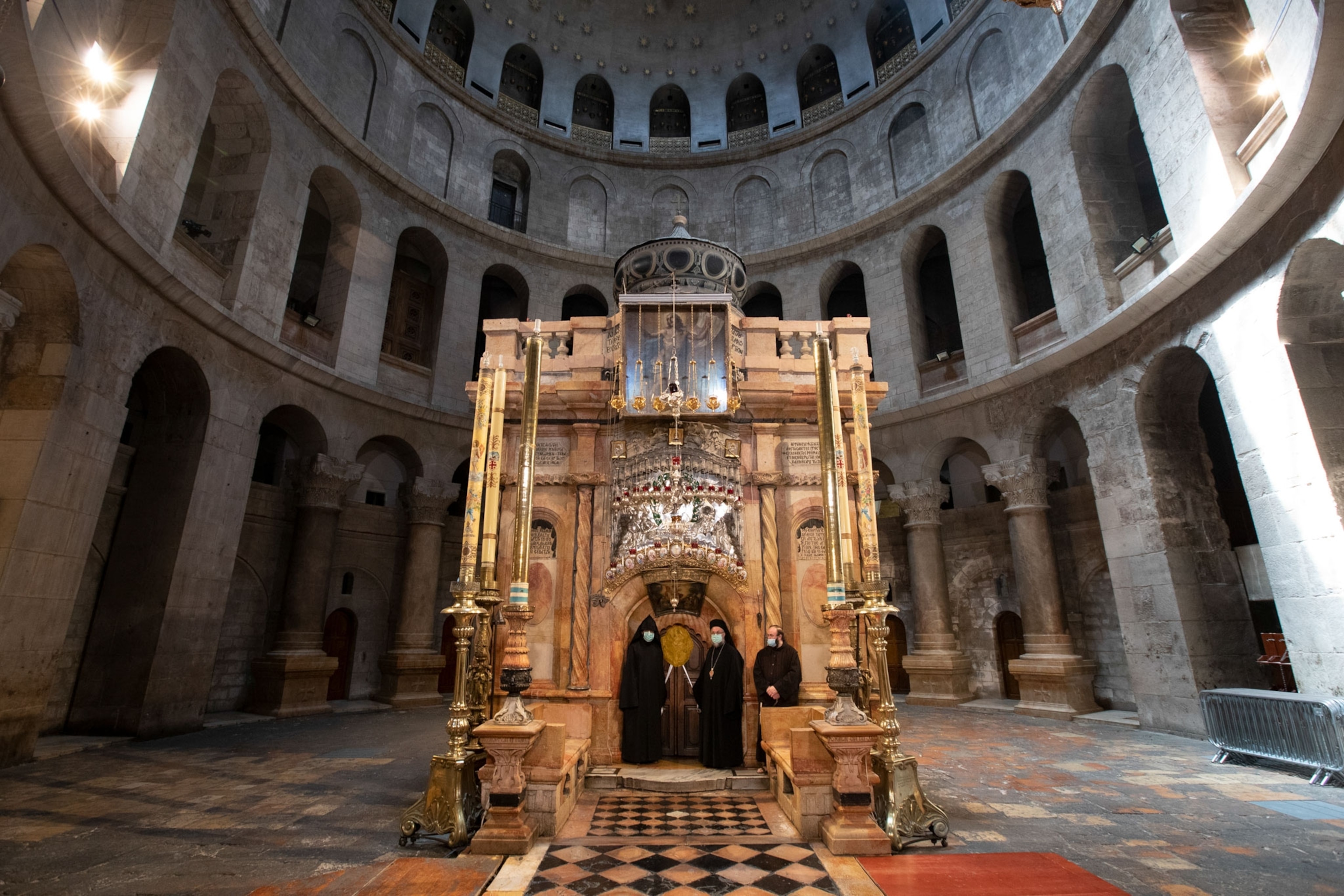

What can archaeology tell us about Jesus?
The annual ceremony of the Holy Fire has taken place inside the Holy Sepulchre on Holy Saturday for more than a thousand years. In the time of coronavirus, however, Jerusalem is locked down under strict quarantine. The Church of the Holy Sepulchre is closed to the public indefinitely for the first time since 1349, when an outbreak of the Black Death forced the holiest site in Christendom to shutter its massive doors. Yet the Holy Fire ceremony was celebrated in Jerusalem again yesterday—albeit with provisions particular to a pandemic that is challenging how the world lives and worships.
Only a dozen or so clerics from the six different Christian communities that lay claim to the Holy Sepulchre were present at the event this year, as well as a few officers from the Jerusalem Police and some media. As in previous years, the ceremony was broadcast live, but this time spectators tuning into their TVs and phone screens from Nicosia to Moscow saw a scene bereft of pilgrims and without that breathtaking moment when the church erupts in a wave of flame and yelps of joy. The robed celebrants, some with long beards that refused to be contained by face masks, appeared somber, though there were a few smiles (and one not-quite-socially-distanced pat on the back) after Patriarch Theophilos III emerged from the tomb with the Holy Fire.

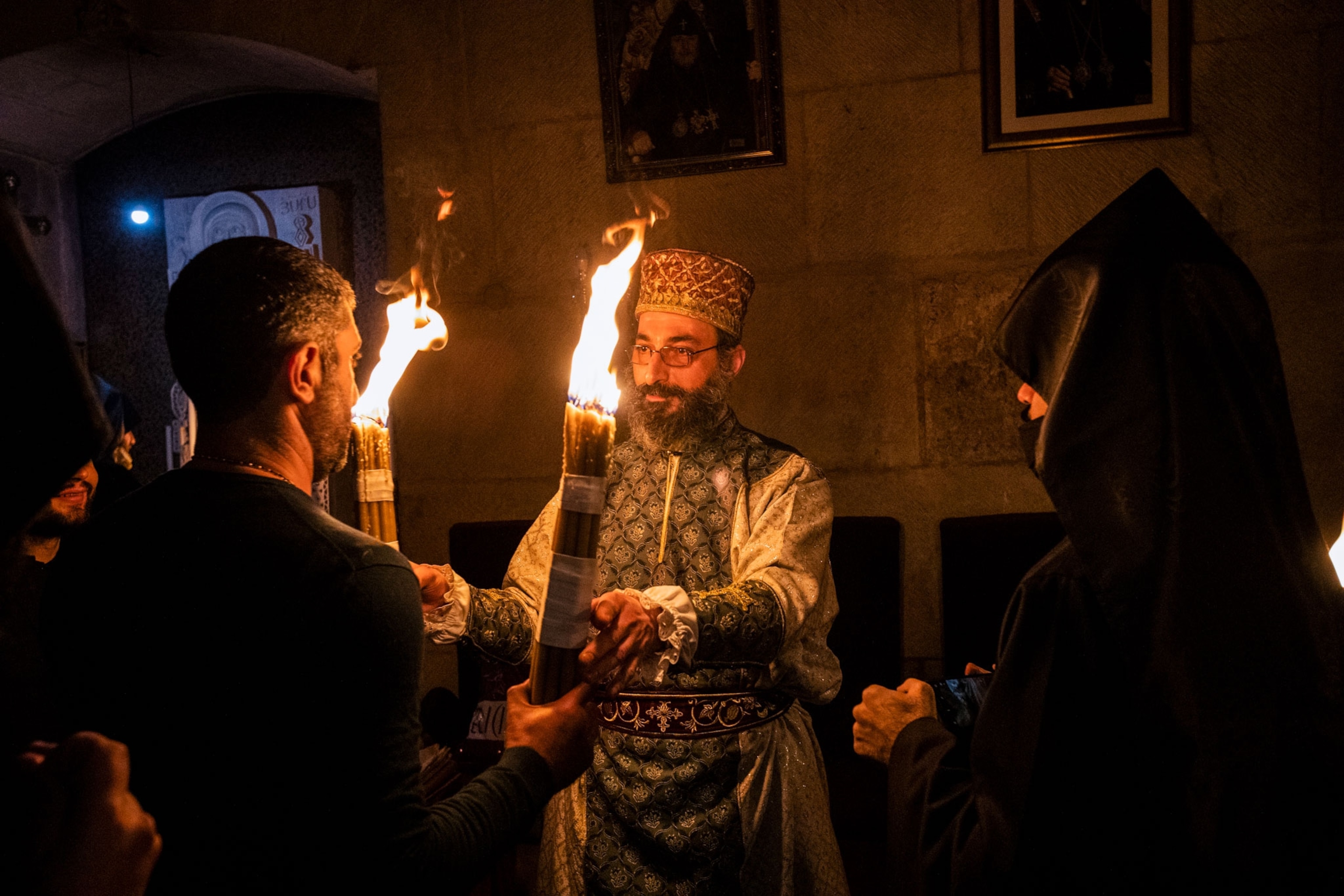
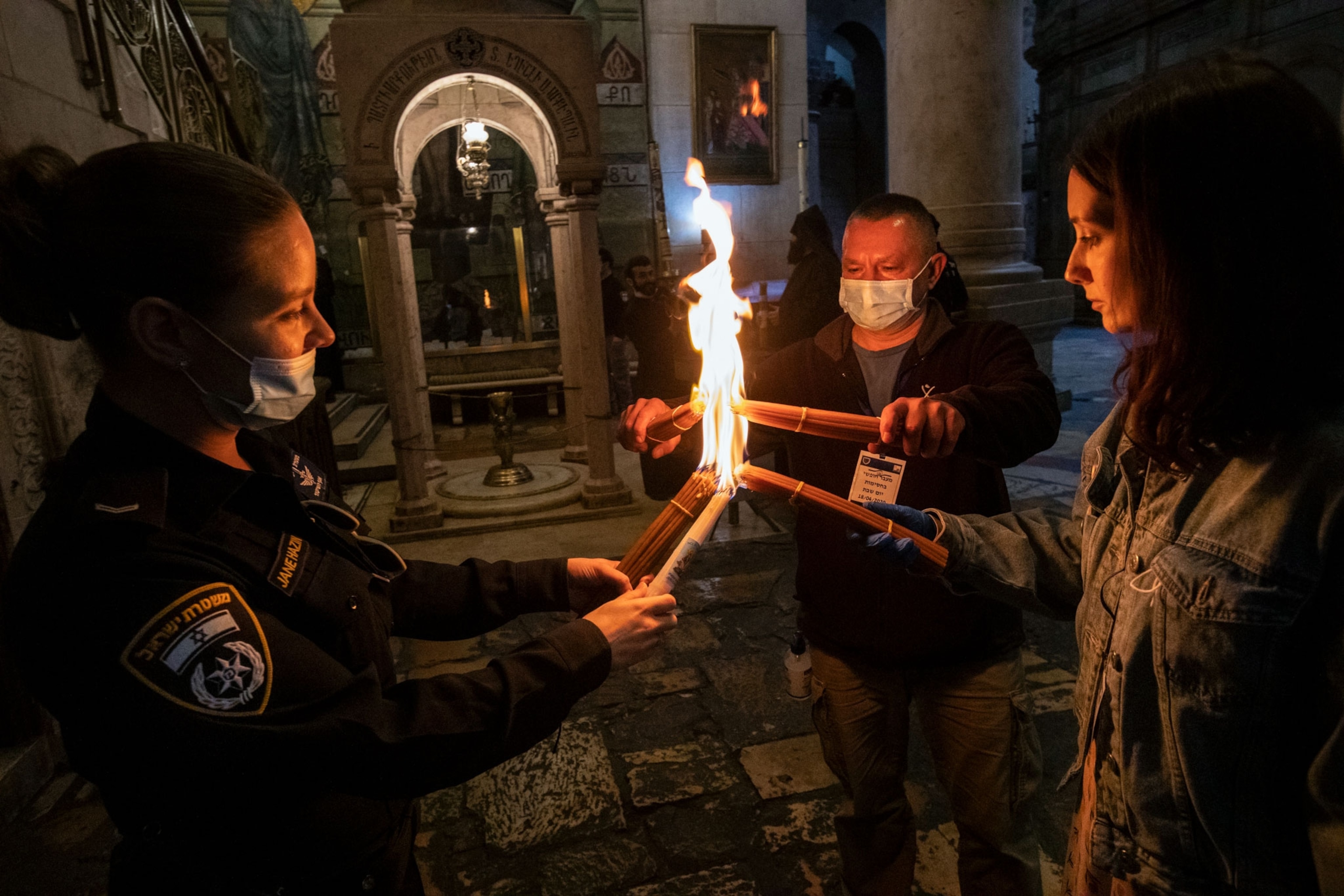
As it has for centuries, the Holy Fire this year was also dispatched to the far-flung corners of the Orthodox world. Lanterns containing the flame were bundled into cars and driven to Gaza, Ramallah, Bethlehem, and border crossings with Egypt and Jordan. From Jordan, the flame ignited in Jerusalem will likely go on to the small Christian communities deep inside the war zones of Syria and Iraq.

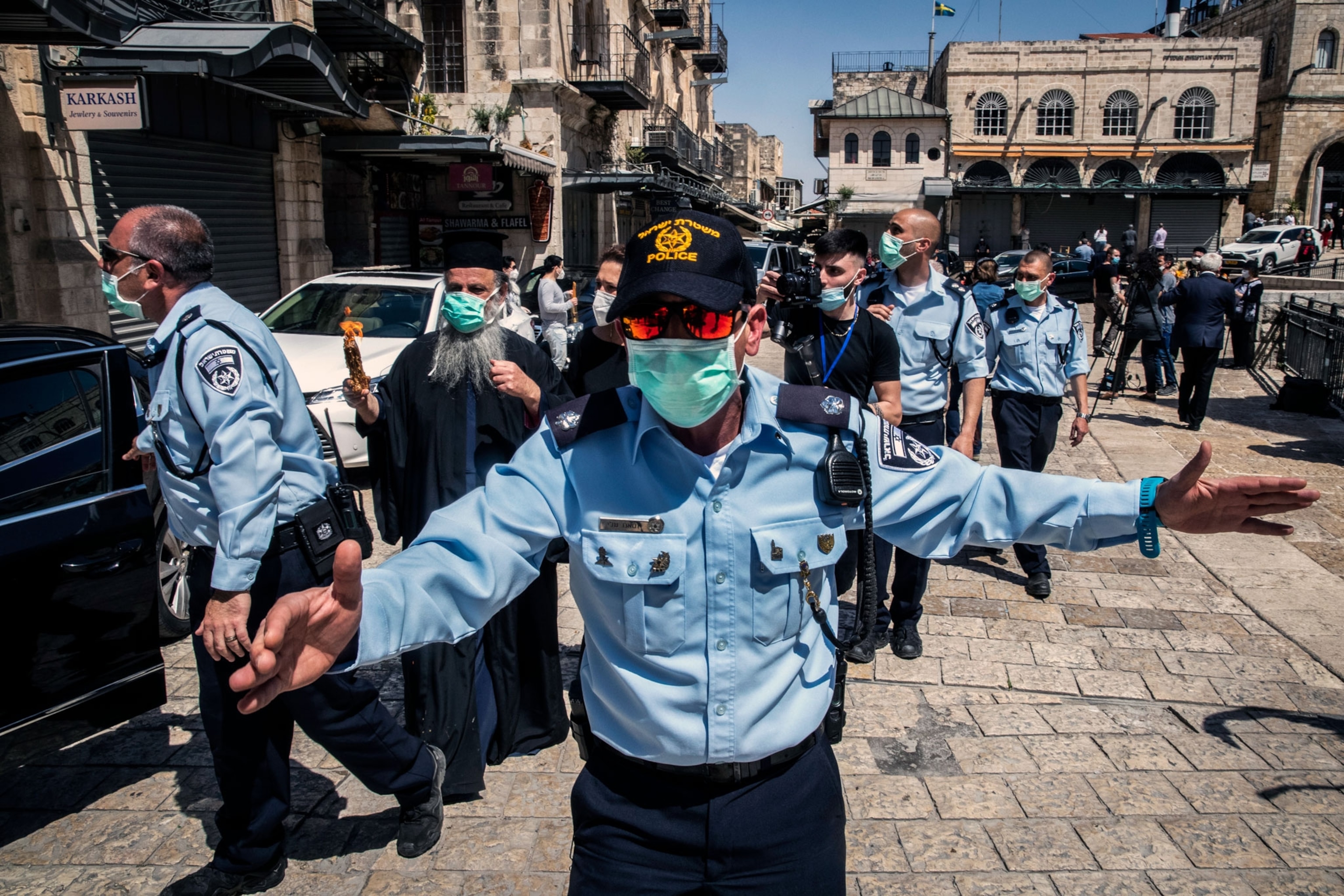
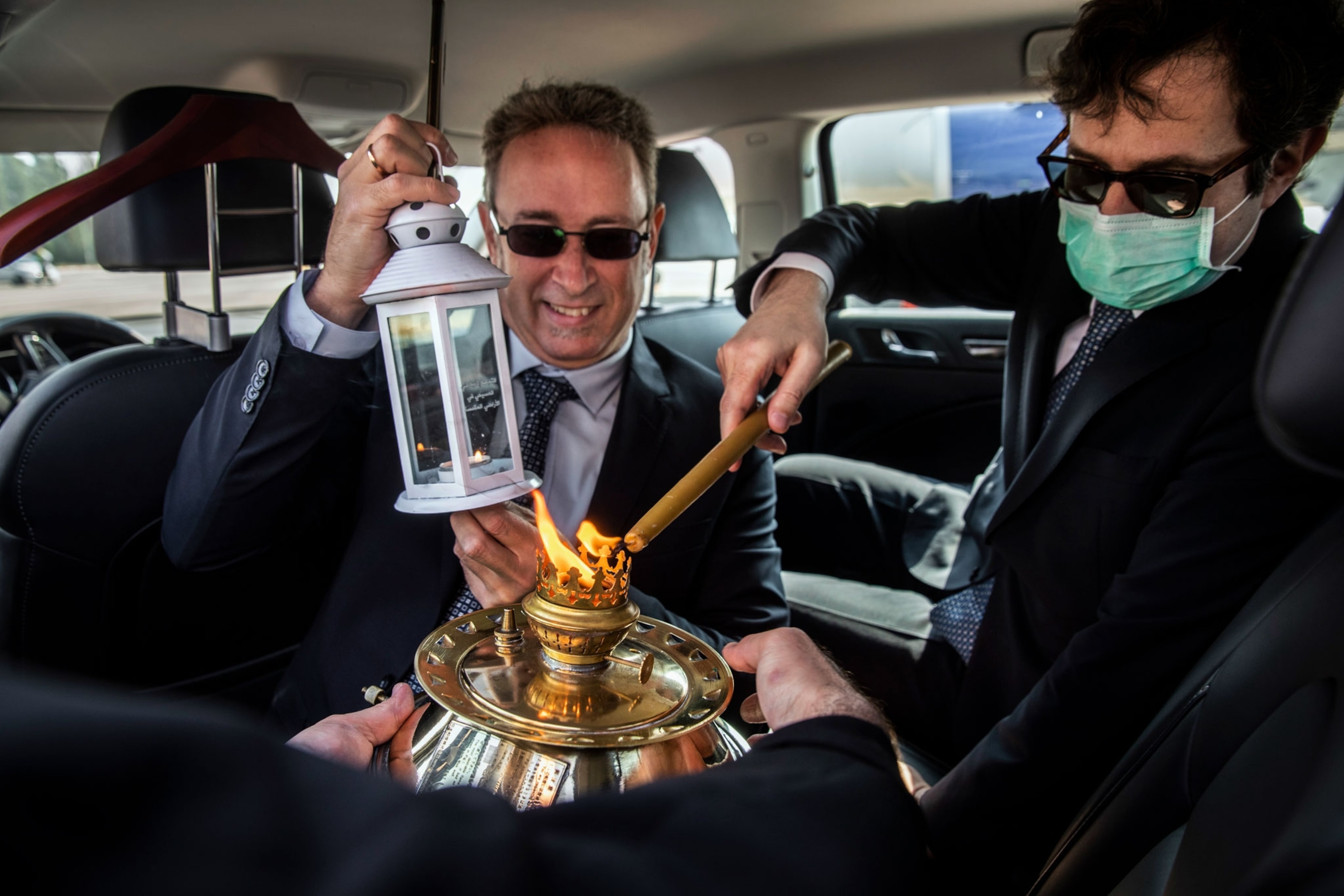
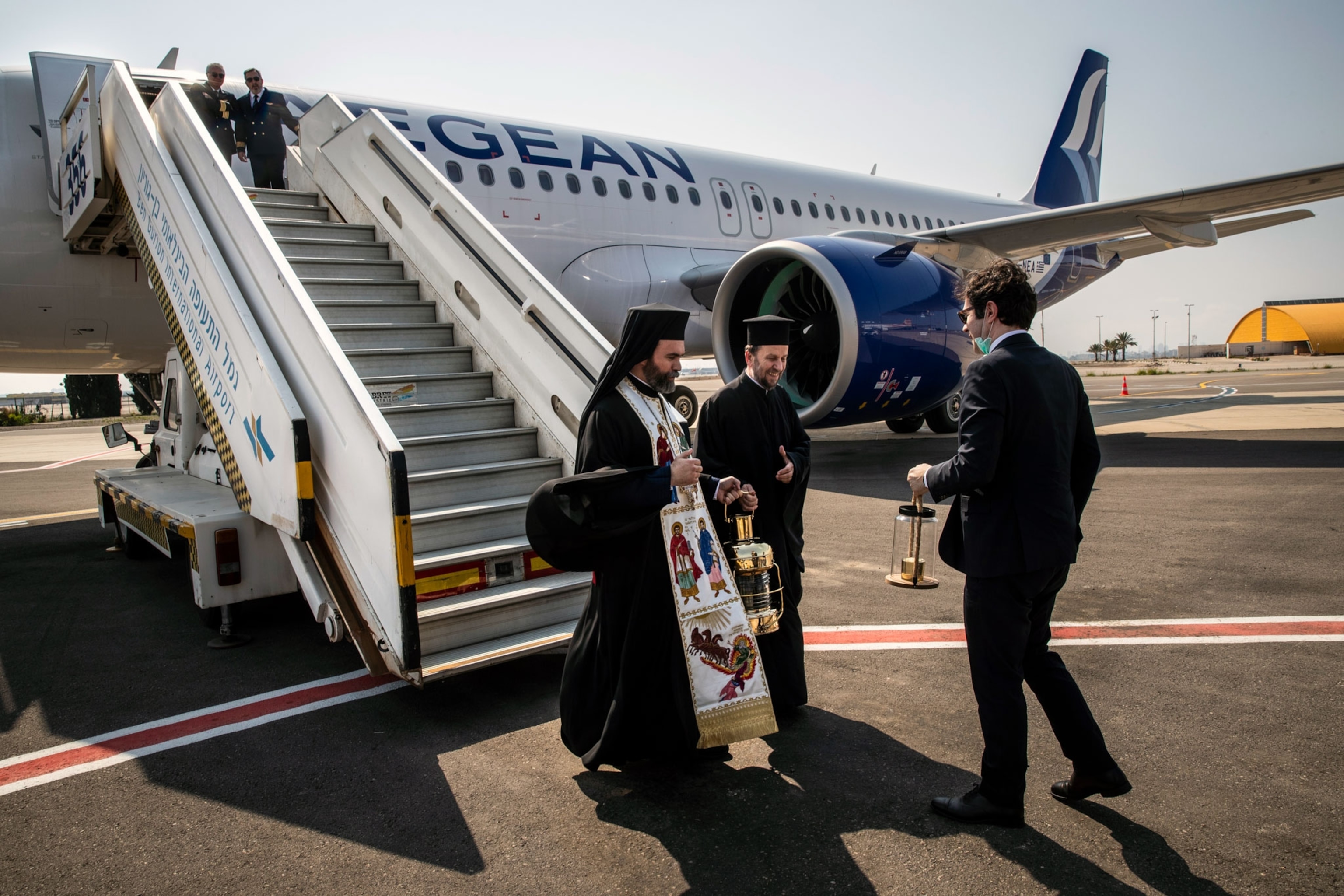
Watch the tomb of Christ opened for the first time in centuries.
The Holy Fire also travels by air to other countries, in specialized containers designed to transport open flame in pressurized cabins. Usually the Fire is spirited away from Jerusalem by VIPs and dignitaries and received with joyful fanfare at its destination. This year, however, with the coordination of the Israeli Foreign Ministry, 10 planes—one for each of 10 countries: Greece, Russia, Ukraine, Georgia, Kazakhstan, Cyprus, Romania, Moldova, Belarus, and Poland—sat on the tarmac at Ben Gurion airport, a remarkable sight at a time when the country is usually receiving only one or two flights a day. The planes were waiting for the arrival of a convoy of cars that made a quick trip along the empty highway connecting Jerusalem to Tel Aviv. After a carefully choreographed, socially distanced handoff to each plane’s quarantined passengers, the flights took off one by one into the sky, carrying the Holy Fire to muted and anxious receptions at their destinations.
Before I attended the Holy Fire ceremony in 2017, I had little grasp of the deep significance and history of the event. It’s one of the largest and most ancient celebrations on the Christian calendar—an annual “miracle” that was first recorded by a French monk in 876. But it’s the nature of this miracle that has also made it a target over centuries.
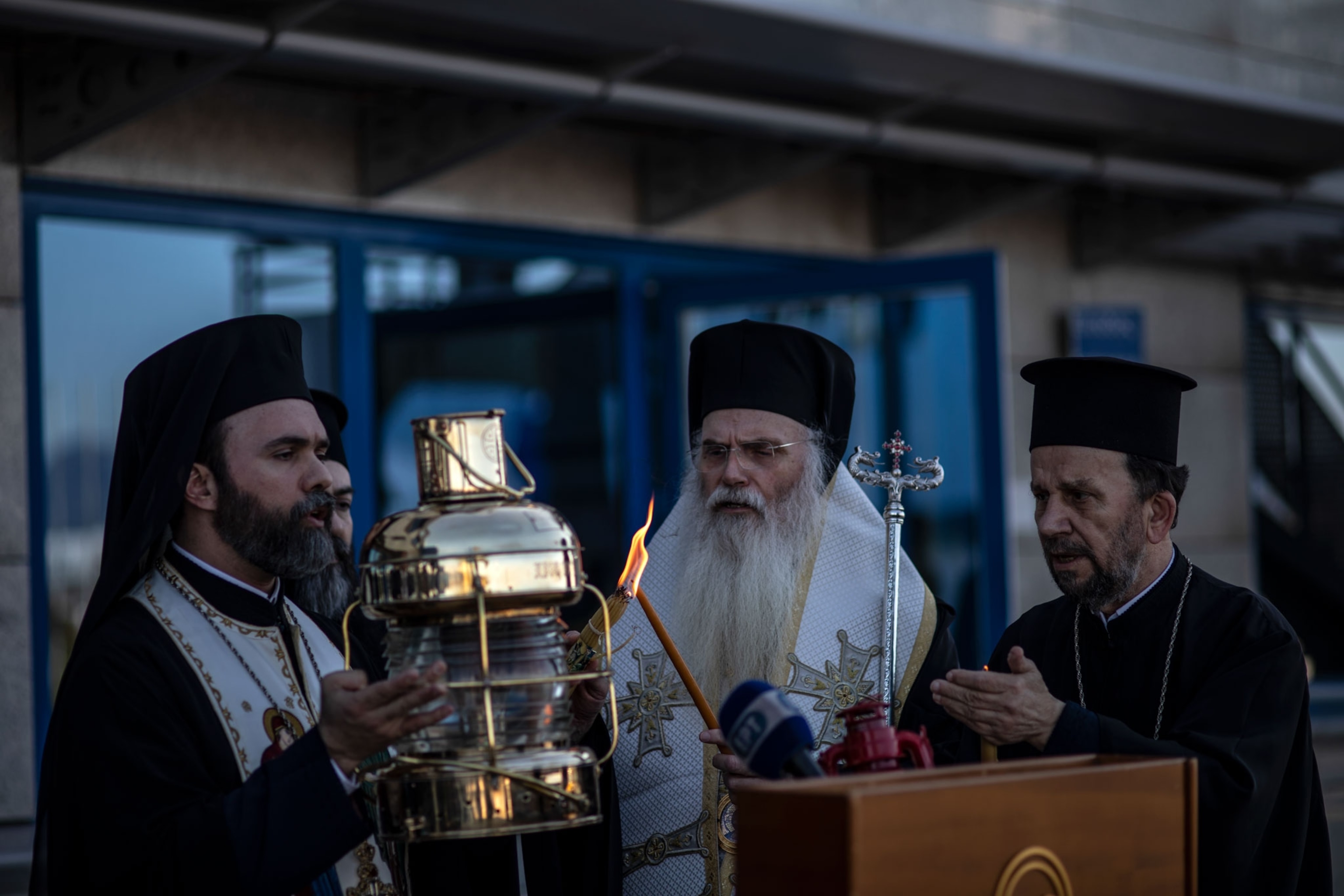
The Church of the Holy Sepulchre was destroyed in 1009, allegedly after the Muslim ruler of Jerusalem became enraged over the “fraud” of the annual fire. (The tomb of Jesus, in which the fire allegedly materializes, survived the destruction and rebuilding of the church). Then two centuries later Pope Gregory, also alleging fraud, forbade his followers from taking part in the ceremony. The subsequent Great Schism of 1054, which divided Christianity into Eastern and Western churches, ensured that the ceremony of the Holy Fire would continue—but only for the Orthodox faithful.
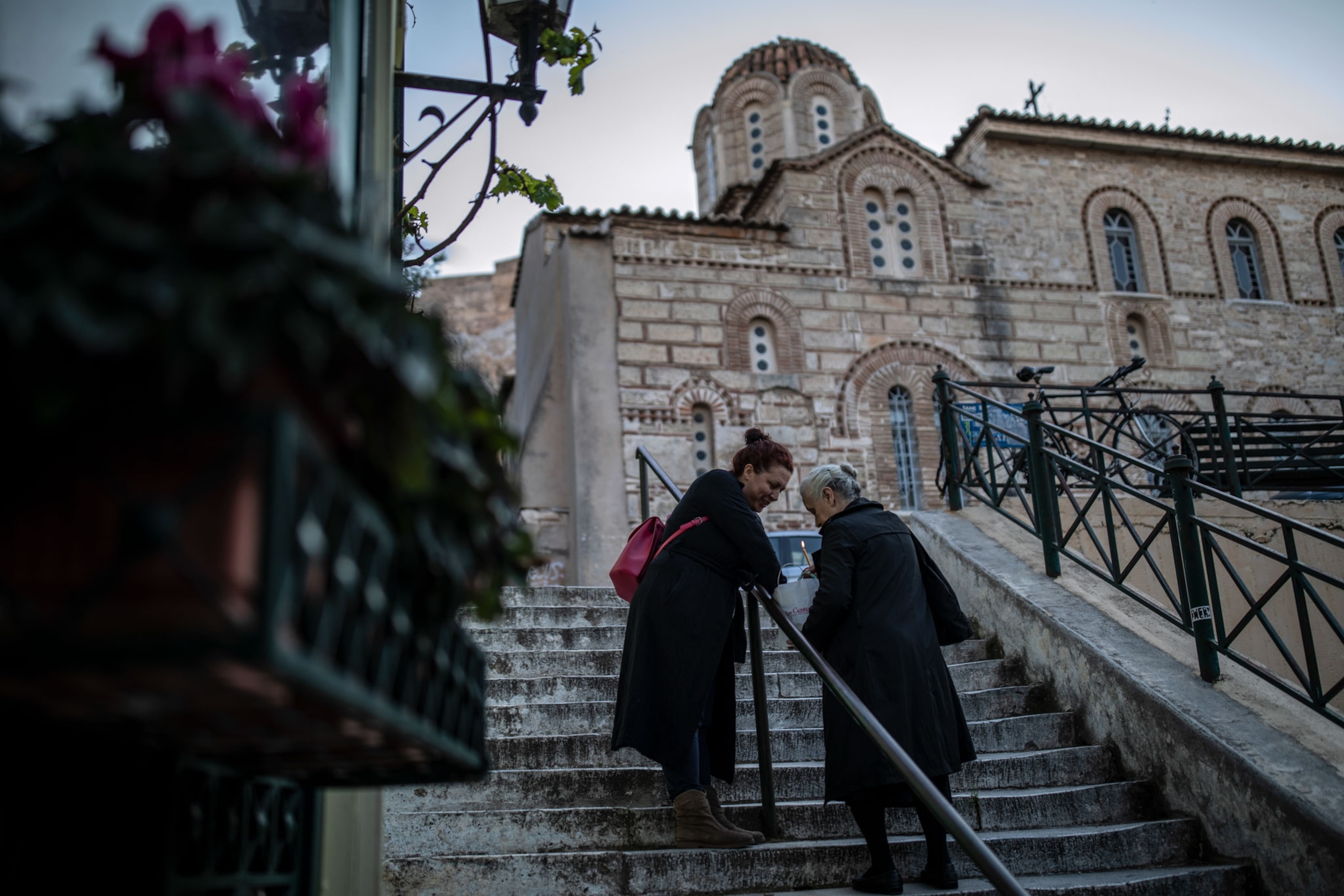
I do not count myself among the 260 million people who practice Orthodox Christianity, but I often think back to that Holy Saturday in April 2017 and the unbridled elation and reverence of the thousands of people around me as the flaming candles first emerged from the tomb. The sudden eruption of heat and light and joy took my breath away.
I was certainly thinking of it on this Holy Saturday, as I sat peering at my computer screen from my quarantined apartment, watching this impossibly small group of celebrants perform the elaborate steps of a ritual that has survived destruction and schism and the passage of more than a thousand years, and continues to persist in this uncertain time of pandemic.
